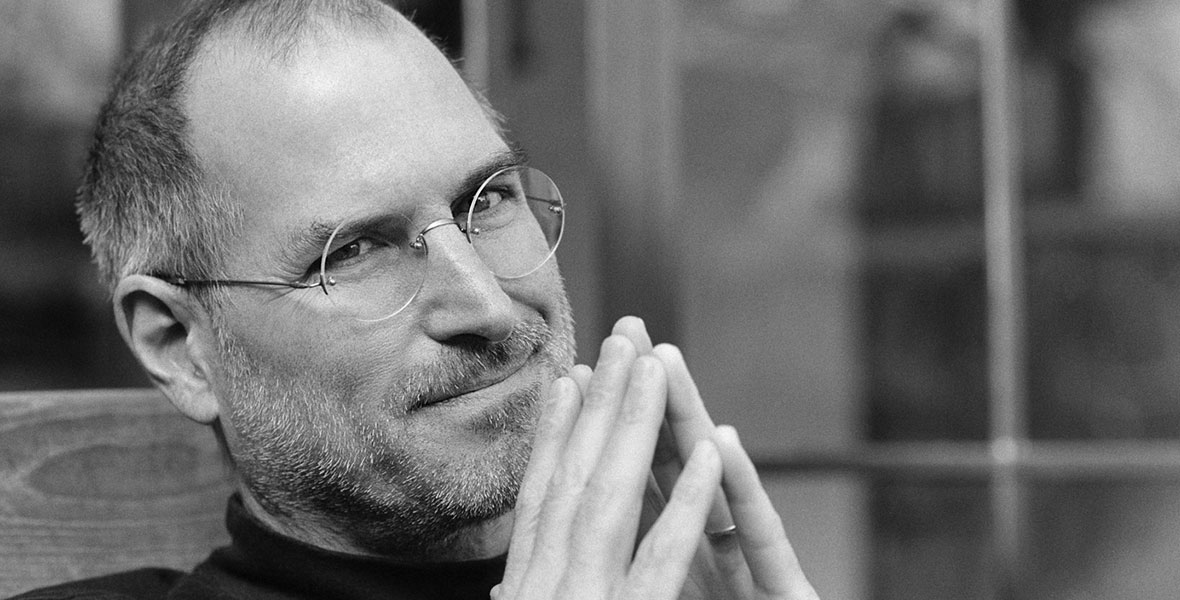A lot of times, Steve Jobs once said, “people don’t know what they want until you show it to them.” Steve did just that for 30 years, donning his trademark black turtleneck and worn blue jeans to become the world’s best-known consumer electronics evangelist.
He was born Steven Paul Jobs in San Francisco, California, on February 24, 1955, and was adopted at birth by Paul and Clara Jobs. His father, who never graduated high school and was a machinist by trade, was the first to sit Steve down at a workbench and show him how to use tools when Steve was 5 years old.
In the years that followed, Steve learned how things worked, and how to take things apart and put them together again. His family moved to Mountain View, California, meaning that Steve grew up in Silicon Valley amid a cultural and technological revolution.
In 1971, Steve met fellow hobbyist Steve “Woz” Wozniak through a mutual friend from Homestead High School in Cupertino, California. The two bonded over the creation of electronic devices that would allow them to make free long-distance telephone calls. After graduating in 1972, Steve enrolled at Reed College but soon dropped out, as the expensive tuition was draining his parents’ savings. He audited classes for the next 18 months before taking a job at Atari Inc. in 1973. In search of spiritual enlightenment, he made a seven-month trip to India in 1974.
Upon returning to California, Steve began attending the Homebrew Computer Club with Wozniak in 1975. Wozniak had designed a new computer, and Steve was intrigued. He suggested they sell his creation and, in 1976, Jobs, Wozniak, and Ronald Wayne founded Apple Computer Company in Steve’s parents’ garage with $1,300 they had raised by selling Steve’s Volkswagen Microbus and Wozniak’s scientific calculator.
Eventually a former Intel executive lent them $250,000 and they set up offices in Cupertino. The next year they debuted the Apple II, and it was a runaway hit.
By 1983 the company had joined the Fortune 500 faster than any corporation in history.
“Hardly anybody had families at the beginning,” he later recalled, “and we all worked like maniacs and the greatest joy was that we felt we were fashioning collective works of art… something important that would last.”
A visit to the Xerox PARC research center in 1979 exposed him to a new technology—a graphical user interface driven by a mouse-controlled pointer. He saw the instant appeal of the concept, which led to the release of the Macintosh in 1984.
In 1985, a power struggle led to Steve leaving Apple, and founding NeXT Inc. The next year, Lucasfilm Ltd.’s computer graphics division spun off its Graphics Group, which became Pixar, Inc. With a $10 million investment, Steve became its primary investor and, eventually, its chief executive. The company spent the next several years developing cutting-edge rendering hardware and waiting for technology to progress to the point where computer-generated feature films would be feasible, which eventually resulted in 1995’s Toy Story. Steve was credited as the film’s executive producer. Disney has consulted on and distributed all Pixar features ever since—and acquired the company in 2006.
Steve returned to Apple when the company acquired NeXT in 1996. He was officially named CEO in 2000. The result was a wave of innovative consumer electronics products based on Steve’s unique sense of minimalist style. Success followed success, with the iMac, iTunes, iPod, iPhone, and iPad each becoming ubiquitous among a gadget-hungry populace. Steve also oversaw the development of Apple retail and online stores. All this activity culminated in 2011 when Apple became the world’s most valuable publicly traded company.
When The Walt Disney Company acquired Pixar Animation Studios in 2006, Steve became the Company’s largest shareholder overnight, joining the Disney board of directors in 2006. He remained a valuable advisor in the years that followed.
“The thing that bound us together at Apple,” Steve once said, “was the ability to make things that were going to change the world.”
Steve Jobs passed away on October 5, 2011, in Palo Alto, after a long and public battle with pancreatic cancer.



